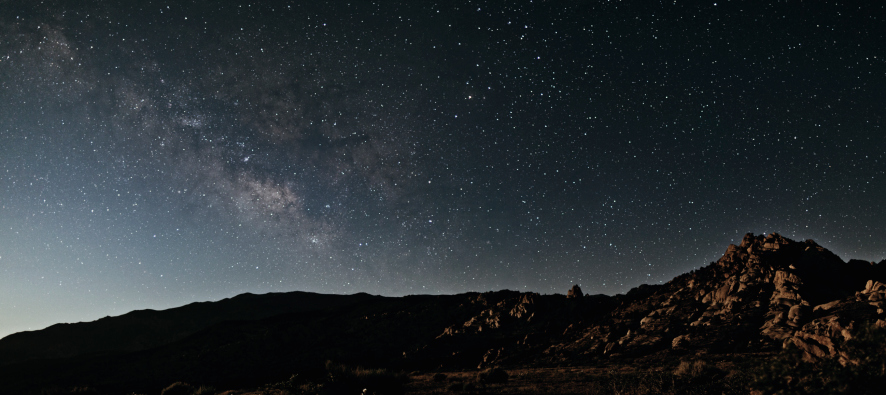Because of well-lit cities and communities spread across America we’re losing the ability to see the stars, says Bob Parks, executive director of the Tuscon-based International Dark-Sky Association, which certifies recreation areas and communities that have minimized light pollution.
International Dark Sky (IDS) Parks have “exceptional starry skies and natural nocturnal habitat where light pollution is mitigated and natural darkness is valuable as an important educational, cultural, scenic, and natural resources.”
The best stargazing locations have low humidity, isolation from light pollution by cities and development, and for an RVer, nearby or on-site campgrounds that make visiting America’s dark skies accessible.
Favorite dark sky viewing locations
Big Bend NP, an isolated area in Southwest Texas along the Mexico border, claims its skies are “dark as coal.” They are, courtesy of the remote location, very low humidity, and infrequent cloud cover. As a gold-certified IDS Park, on a clear night, expect to see 2,000 stars, plus planets and meteorites. Winter is best time to visit. McDonald Observatory, 140 miles north at 6,700-feet elevation, is also known for its stargazing as well as its telescopes.
Death Valley NP is the best place to see meteor showers and lunar eclipses, as the park produces very little artificial light within its 3.4 million acres, 91% of which is designated as wilderness with no development. But what really makes this Gold-Certified IDS Park so special is the combination of dry climate, clean air, and an expansive horizon. Plan your visit from November to April when temperatures are in the 70s and park rangers lead night sky programs.
Bryce Canyon National Park’s clean, dry air, high elevation, and lack of light pollution make Utah’s Bryce Canyon one of America’s darkest places. During the week of the new moon or the week prior to the new moon, the Milky Way appears like a giant silvery arch across the horizon, and 7,500 stars can be seen with the naked eye. Bryce’s Annual Astronomy Festival scheduled for June provides a rich program of presentations, science workshops, and sky tours. Nearby Cedar Breaks National Monument (at over 10,000 feet) has equal – if not better – viewing conditions.
Cherry Springs State Park, in north-central Pennsylvania, is one of the darkest spots east of the Mississippi, and became a Gold-Certified IDS Park, one of only a handful in the U.S., in 2008. Set atop a 2,300-foot high mountain surrounded by the 262,000-acre Susquehannock State Forest the park offers a 360-degree view of the night sky free from light pollution. You can even see the Milky Way Galaxy’s nucleus.
The Headlands County Park on the shores of the Straits of Mackinac in Michigan is free of most city light pollution, and has been a Silver-Certified IDS Park since 2011. Take the Dark Sky Discovery Trail for comet watching, asteroids, and constellations.
Denali National Park, Alaska is America’s best place to view the jaw-dropping Northern Lights (Aurora Borealis) phenomenon of greens, reds, blues, and purples dancing across the night sky. Plan your trip for the fall, winter, or early spring, when long hours of darkness make for perfect night sky viewing.
Other great stargazing locations include Glacier NP in northern Montana, Sedona and Grand Canyon NP in Arizona, Chaco Culture NHP and Clayton Lake SP in New Mexico, Great Basin NP in Nevada, Badlands NP in South Dakota, and Acadia NP in Maine.
